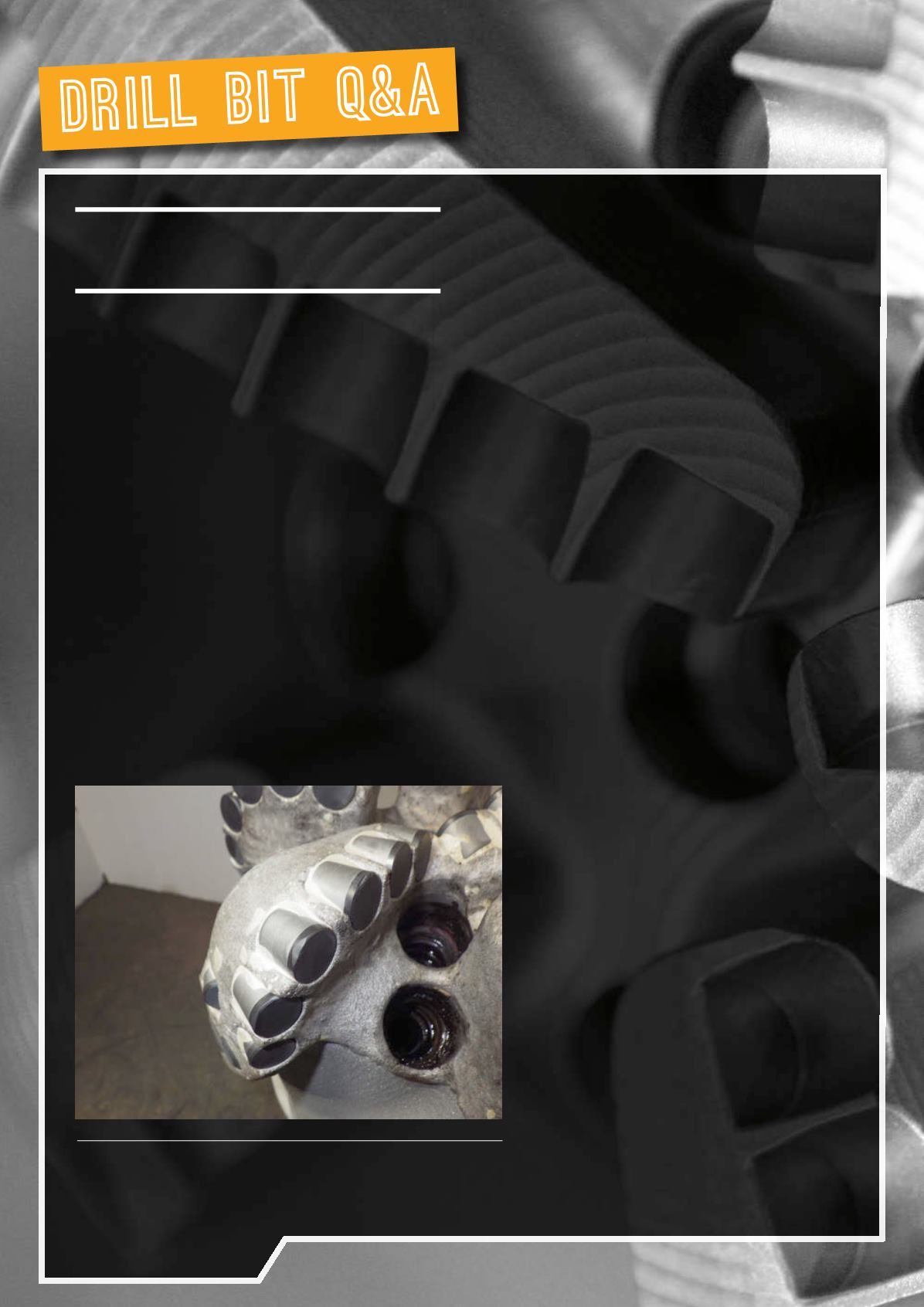
24 |
Oilfield Technology
January
2016
Dri ll Bit Q&A
Tim Beaton, Shear Bits,
Canada
Advances inPDCTechnology
A
n interesting situation has developed in the oil and gas
drill bit industry, specifically with regard to PDC cutter
development. The typical development process for any
new PDC cutter technology is naturally very complex. Despite the
fact that the industry has spent the past 30 - 40 years attempting
to develop laboratory scale testing that can simulate the results
of actual field tests, the variability of real world applications
still cannot be fully replicated in a laboratory environment.
Therefore, no matter what level of R&D or laboratory
experimentation is undertaken to develop new technology,
the ultimate test of validity is in the downhole environment.
Unfortunately, during 2015, when drilling activity declined at
such a rapid pace, it left larger service companies with excessive
inventory levels of PDC cutters. That situation, coupled with the
greatly reduced availability of drilling programmes, equated
to a tremendous slowdown in field-testing opportunities and
subsequently in the speed of PDC cutter development at major
service companies.
One example of a process that is still returning performance
advances can be found at a smaller, independent service
company focused on developing new technologies that deliver
value to oil and gas operations. Partly out of necessity, and partly
as an overall strategy to accelerate development, Shear Bits
approaches carefully analysed and planned field trials as quickly
as possible. A recent result of this process was field record
performance in a highly challenging horizontal application. The
formation is composed of fine grained siltstones, with calcareous
shale inter beds, and the application presents thermal, abrasion
and impact challenges for PDC cutters. Previously, the leading
performance in the field was with premium deep leached cutter
technology from a major service company. Using new PDC
cutter technology that significantly enhances thermal stability
compared to conventional non-leached cutters, the 6 ¼ in.
SH513E PDC drill bit (Figure 1) was able to drill the longest
interval for the operator at a higher ROP than all of the shorter
runs in the application (Figure 3).
Hybriddesigns
The first designs of PEXUS™ hybrid bits were targeted at
applications where conventional PDC bits are ineffective, such
as drilling gravel, boulders or other conglomerates that typically
destroy PDC cutters. The hybrid cutting structure includes
large gouging inserts that are not part of a conventional fixed
blade structure preceding a more typical blade of PDC cutters.
This construction proved to be extremely effective in drilling
challenging lithologies at a high ROP without suffering damage
to the PDC cutters. In addition to providing enhanced durability,
it was discovered that this cutting structure configuration
also produced smooth torque response equating to superior
directional behavior compared to conventional PDC bits.
In an effort to expand the benefits of the technology into
more applications, a new concept has been developed.
Unlike earlier designs that were focused on expanding
the application range of fixed cutter bits through added
toughness, the new concept focuses on delivering a
faster rate of penetration to enhance performance in
existing PDC bit applications. The first design in this new
series is the 12 ¼ in. SVP419 (Figure 2) which includes
four blades of 19 mm diameter PDC cutters with
large gouging inserts in the middle of the waterways
between the fixed blades. This new layout allows the
hybrid cutting structure to drill as fast as, or faster than
conventional PDC bits, while delivering more consistent
toolface control and improved toughness in challenging
formations. The first run with the new design was
recently completed in a surface interval with some
gravel in the upper portion of the section and included
instantaneous ROP values over 700 ft/hr. The average
ROP for the interval was as fast as any PDC bit run in the
area, and the dull was found to be in excellent condition,
with no broken PDC cutters. The run was conducted with
a conventional directional assembly with a 1.83˚ bent
motor, and the new hybrid bit responded very well to
directional requirements.
Figure 1.
Dull condition of 6¼ in. SH513E PDCdrill bit after drilling 1754m ina
challenging horizontal interval.


